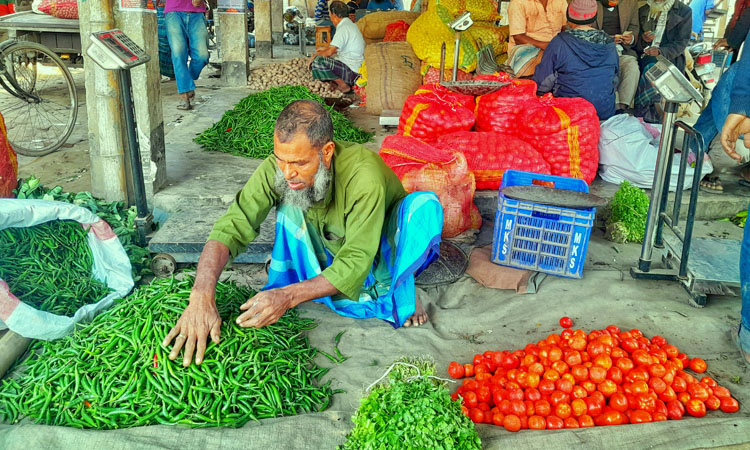News Flash
News Flash

LALMONIRHAT, Nov 26, 2025 (BSS) - The district is witnessing abundant yields of winter vegetables this season, similar to other districts in the northern region but retail prices remain high.
Fields across the district are producing large quantities of gourd, radish, cabbage, patal, brinjal, tomato and other winter varieties, which are reaching wholesale markets directly from farmers each morning.
Despite this steady supply, retail vegetable prices have remained unexpectedly high, causing frustration among consumers. Typically, during early winter, vegetable prices in producing regions range from Taka 10 to Taka 40 per kilogram.
This year, however, buyers say they have been facing elevated prices for months, prompting calls for increased government monitoring to stabilize the market.
Key wholesale markets in Sadar upazila-Goshala, Saptibari, Nayarhat, Mahendranagar, BDR Hat and Barabari Bazar-are bustling daily as farmers bring in produce. These vegetables are then distributed to various parts of the district and beyond.
A visit to several markets in the district headquarters on Wednesday revealed that small bitter gourd was selling for Taka 120-130 per kg, large bitter gourd Taka 60-65, tomato Taka 70-80, carrot Taka 60-70, beans Taka 50-60, long beans Taka 50-60, cucumber Taka 40-50, sweet pumpkin Taka 40-50, and gourd Taka 40-50 per piece.
Cauliflower and cabbage were priced at Taka 40-50, radish at Taka 20-30, and coriander leaves at Taka 60. Green chilies were selling for Taka 100 per kg, onions Taka 80-90, ginger Taka 120, garlic Taka 80-100, and lemons Taka 25-30 per piece. Prices vary slightly between urban and union-level markets.
Buyers at Goshala market expressed concern over the widening gap between wholesale and retail prices.
Alamgir Hossain, 50, and Afzal Hossain, 52, said that while Lalmonirhat is a producing region with low transportation costs, retail prices remain disproportionately high.
"Since vegetables are grown here, they should be available at Taka 10 to 40 like before. If prices are rising even in producing areas, the situation in big cities must be worse," said one of them. They blamed excessive profit-taking and urged regular government intervention.
Traders and farmers, however, pointed to supply disruptions earlier in the season. Sekender Ali, a wholesale trader at Barabari Aart, said winter vegetables have been entering the market for a month and that farmers have been receiving good prices.
"But since cultivation was delayed, the supply is still lower than usual. Prices may fall within the next one or two days," he added.
At Senamaitree Hawkers Market, vendor Almuddin, 42, said early-season storms hindered timely cultivation, while market syndicates also played a role in pushing prices upward.
Farmer Akbar Ali, 52, echoed these concerns, noting that sudden rains, cyclone winds and cold spells damaged crops. Rising costs of seeds, fertilizers, pesticides, irrigation and labor further increased production expenses.
According to the Department of Agricultural Extension (DAE), around 2,155 hectares in the district have already been prepared for early planting this season, excluding potatoes, and the cultivated area is expected to expand. The department emphasized its focus on producing safe, pesticide-free vegetables.
Dr. Md. Saikhul Arifin, Deputy Director of the district DAE, said the current situation reflects both good yields and strong market demand.
"Farmers are getting fair prices for winter vegetables, which is a positive sign. As supply continues to increase, retail prices are expected to come down. The market should stabilize in the coming days," he said.